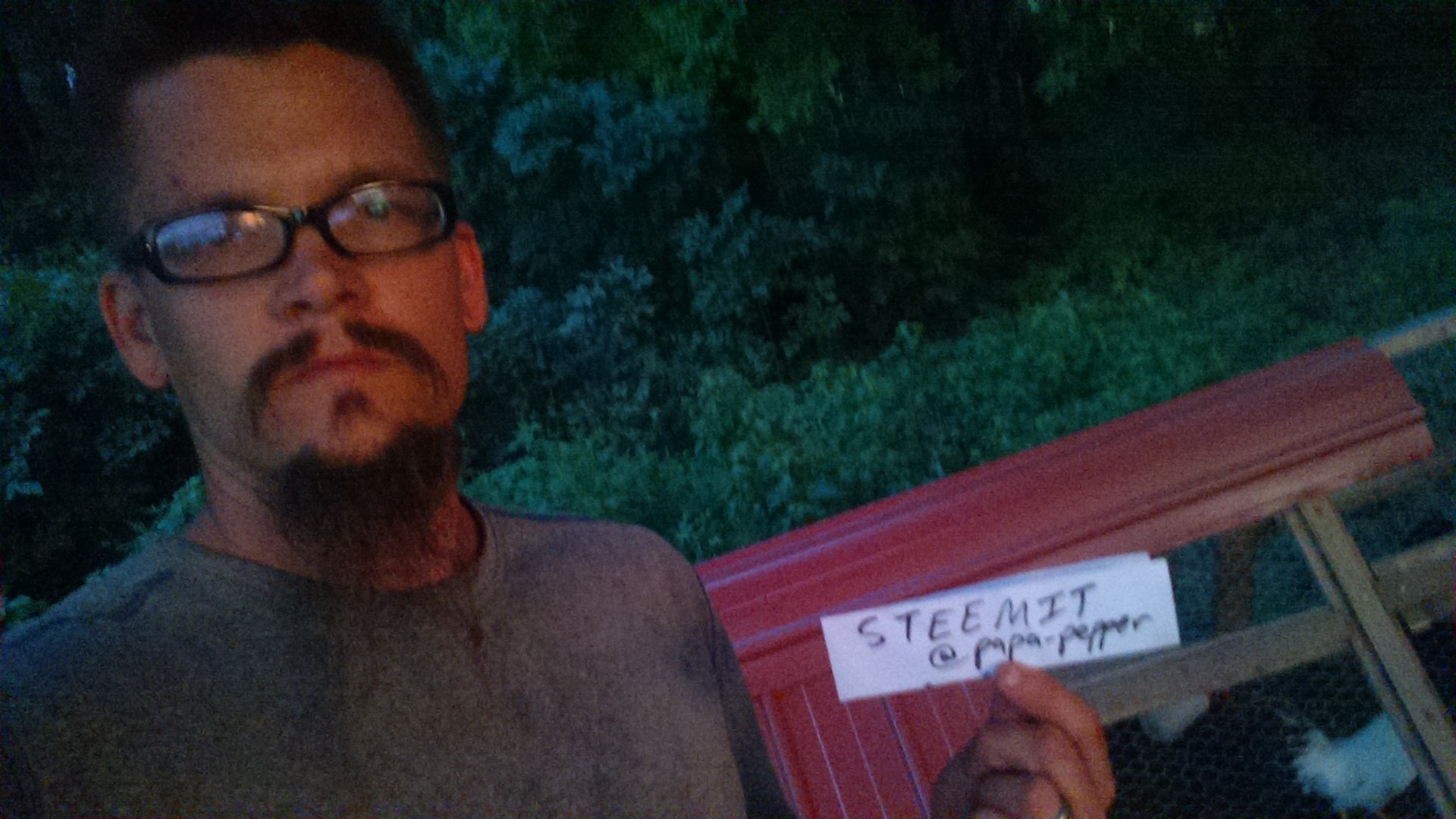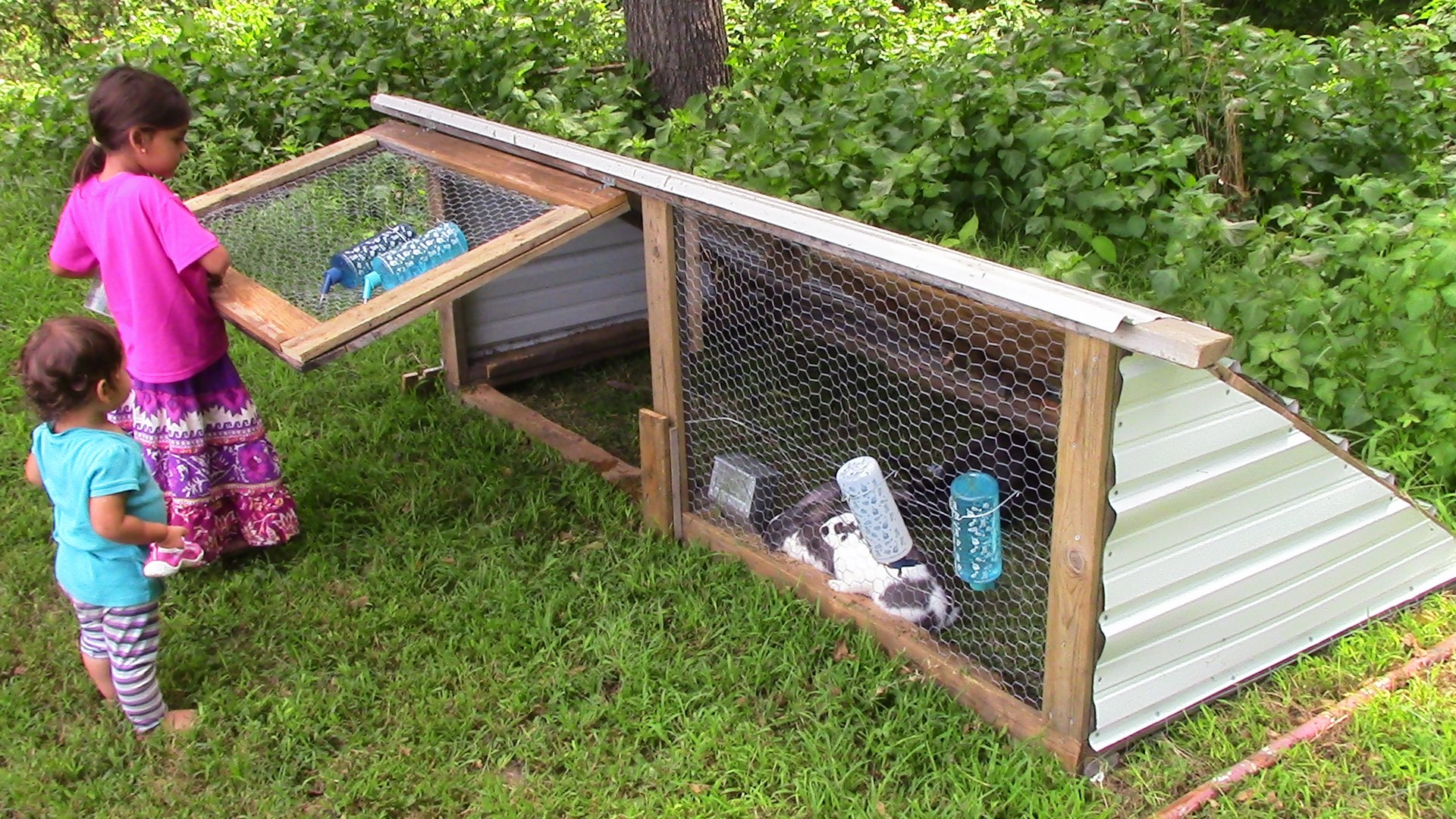
The idea of building “tractors” for animals has at least been around for a while. Many people have been posting videos online and writing articles in magazines for years now. I’m not trying to share their designs or instructions or what they’ve written on the subject. Other than being vaguely aware of the general concept, I haven’t even researched it that much myself.
The basic concept was enough to convince me that it was the way to go.
Basically, though animals may be considered “domesticated”, they have not become a completely different animal. They have a history in the world, and an ancestry. Once, they were wild, and were quite capable of taking care of themselves. Some basic instincts may have been bred out of them over the years, but the animal is not entirely that different.
Animals in the Wild
In the wild, animals all “free range”. They may have a “base camp” like a den, nest, or common roosting spot, but they are free to roam. I drive past too many fences full of horses, sheep, cows, or goats that are basically dirt pens. Something has been lost. With the loss of freedom to move, the grass and plants disappear too. Though many farmers know about crop rotation, too few spend the time or energy to rotate their animals into new pasture. I know that many do rotate, but I still consider it to be too few.
As for my family, we have no pasture or grazing animals at the moment, but we do have some yard available and some chickens and rabbits. Of course most people know that rabbits can eat grass, but it’s true that chickens do too. If they will eat grass, ( and they may even know what is good for them) , why not let them? The chickens eat a ton of bugs too; VALUE ADDED.
OUR TWO MAIN OPTIONS
Option 1: Traditional
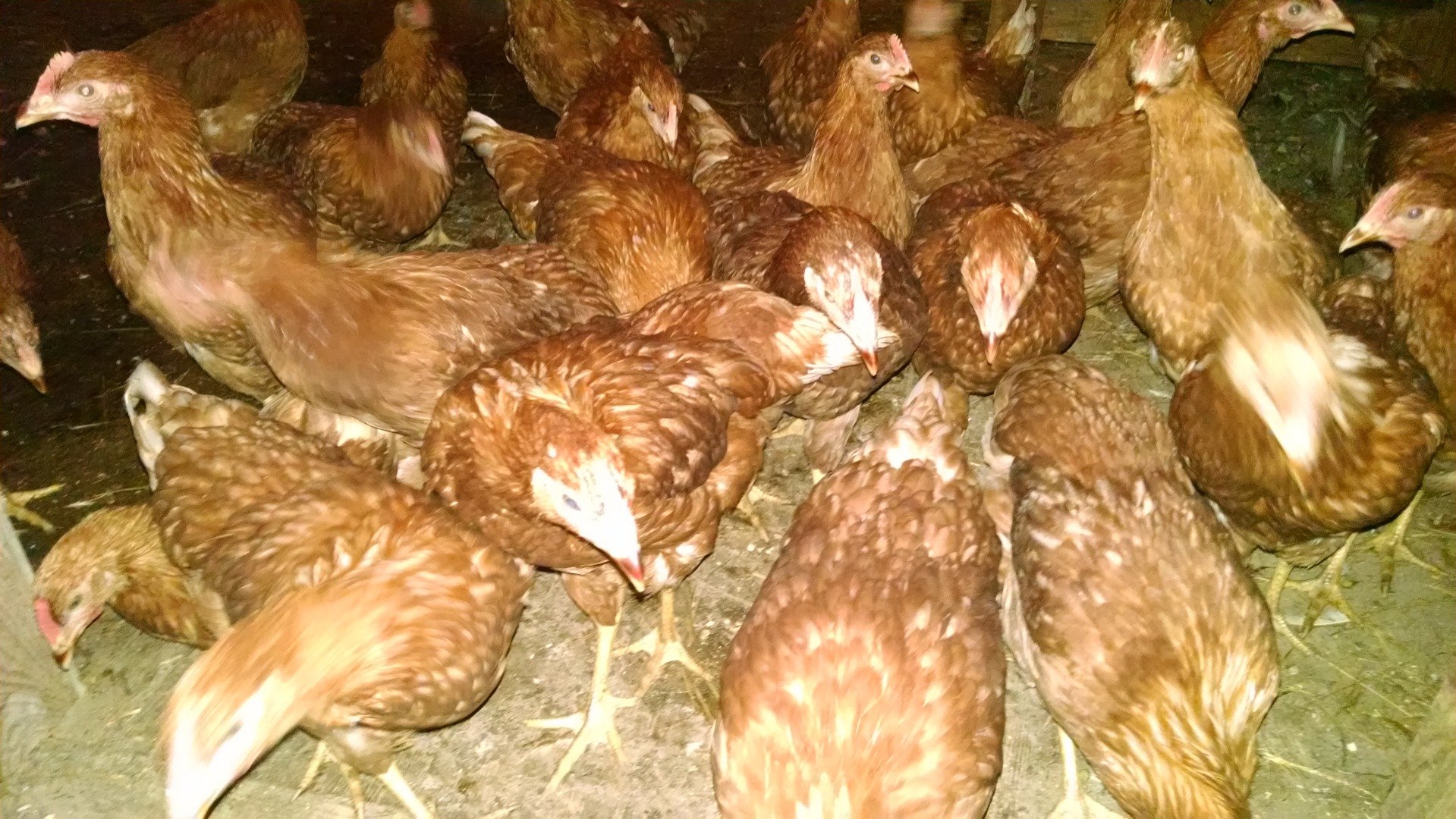
THE CHICKEN COOP - A traditional way of keeping chickens.
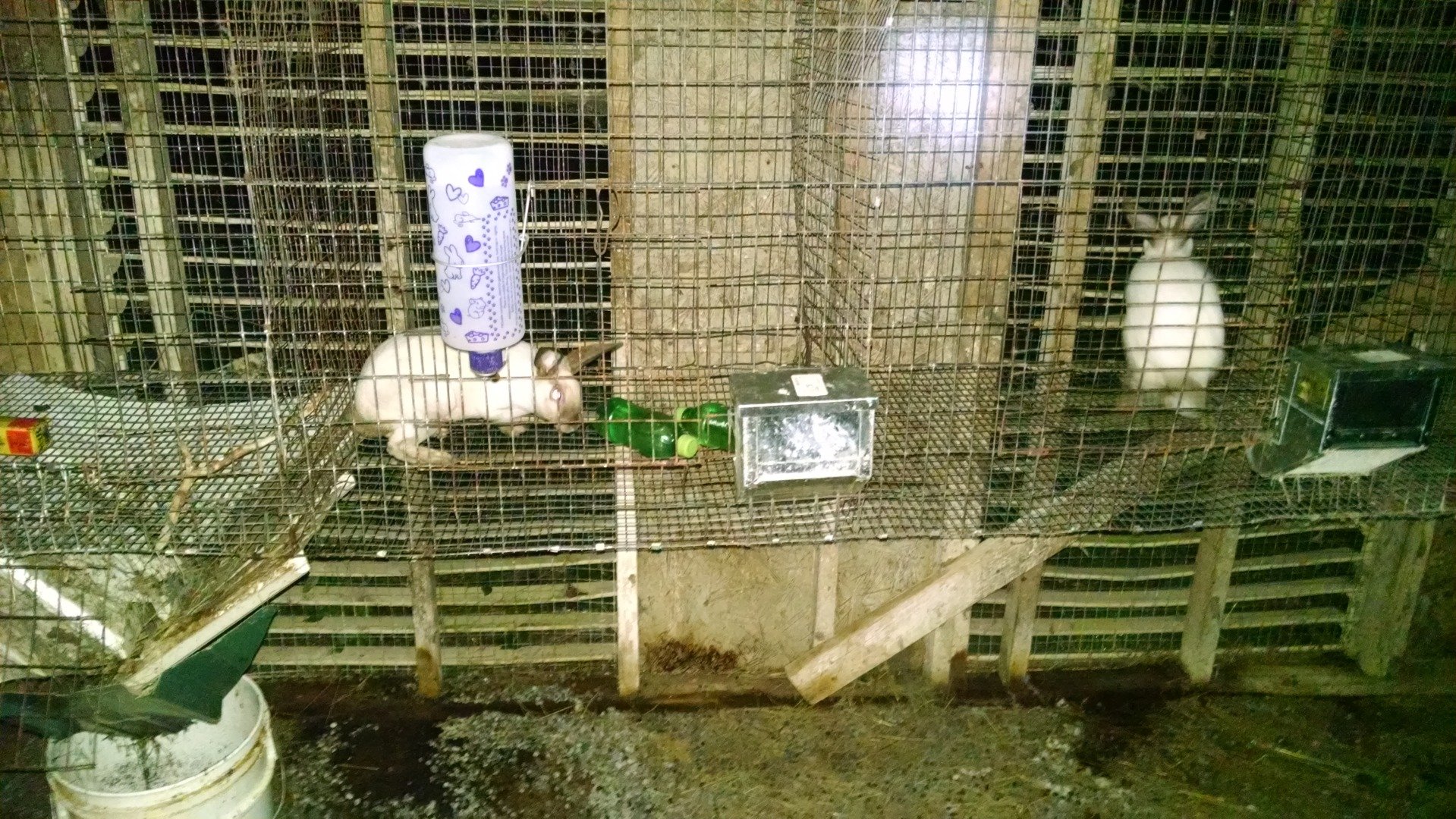
THE RABBIT CAGE – A traditional way of keeping rabbits.
Traditionally, for the kinds of animals that we currently have, coops and cages were the way to go. Often, not only was grass not an option in those environments, a breeze or sunlight could be hard to come by too. The only edibles available to the animals would have to be manually provided by their owners. That meant no fresh greens for the rabbits and no greens or bugs for the chickens, unless someone took the time to physically put them in.
Option 2: Tractor

A MOVABLE RABBIT TRACTOR
Though I can only guess that these movable pens are called “tractors” because they can move, this was our other option. A portable pen or cage that can be moved on a daily basis, providing a new supply of tasty greens for the animals inside.
Thankfully, many people in the neighboring community are in construction. Extra or older scrap pieces of material are placed on a pile, which people are free to take and use from. With wood, metal siding and roofing, and sometimes even wire fencing periodically available, it works out well for us. I am still experimenting, and generally have the habit of intelligently “winging it” when it comes to projects, but here’s what we’ve built so far.
THE ROOSTER TRACTOR
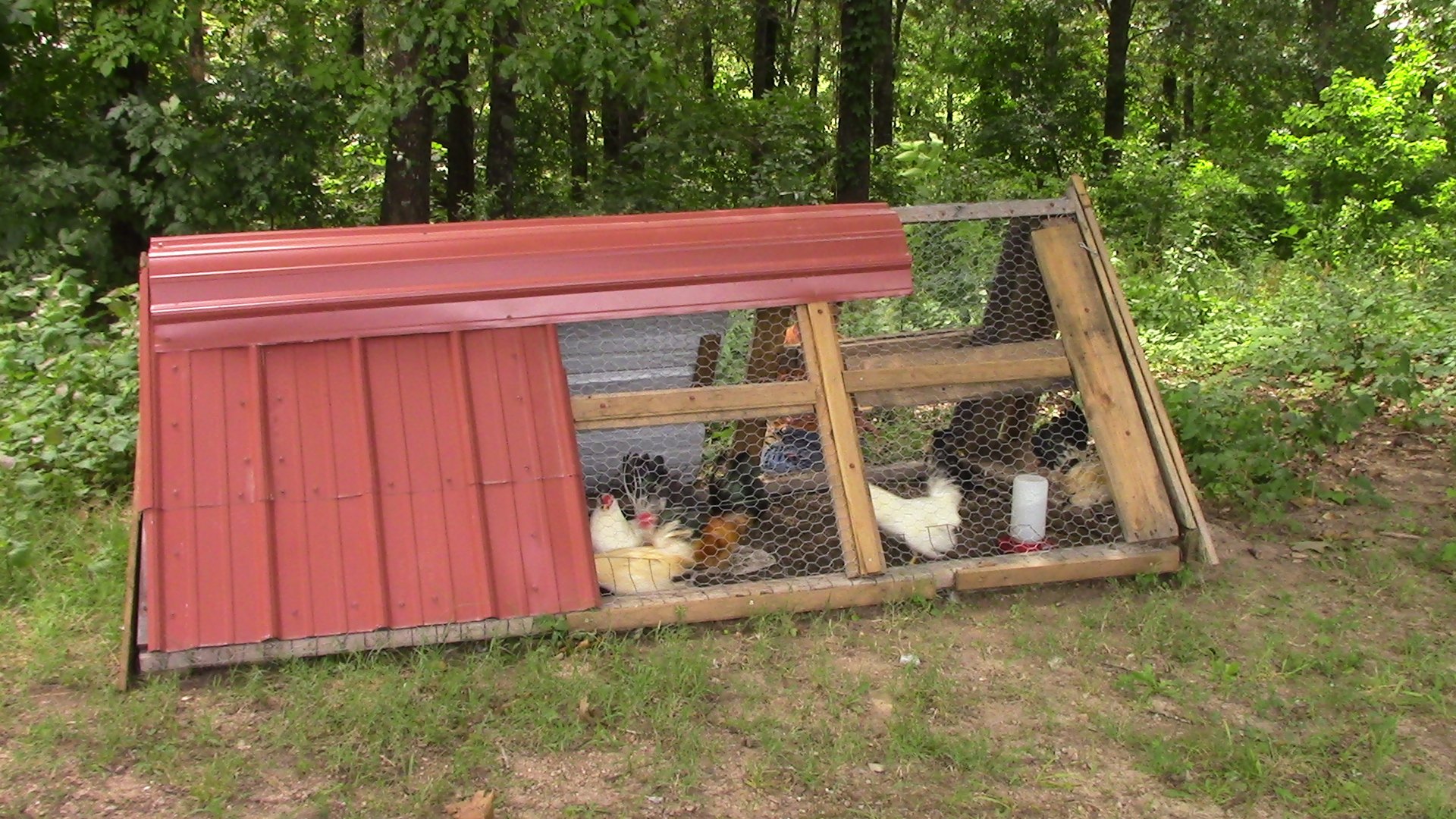
THE FIRST TRACTOR I BUILT WHICH WOUND UP HOUSING OUR FREE ROOSTERS
Back when we were given “Monster Truck the Eagle”, my son's rooster, and 5 of his siblings, options were limited. I had originally built this one for the rabbits to use, but since we had other options of where to keep them, we donated it to the roosters.
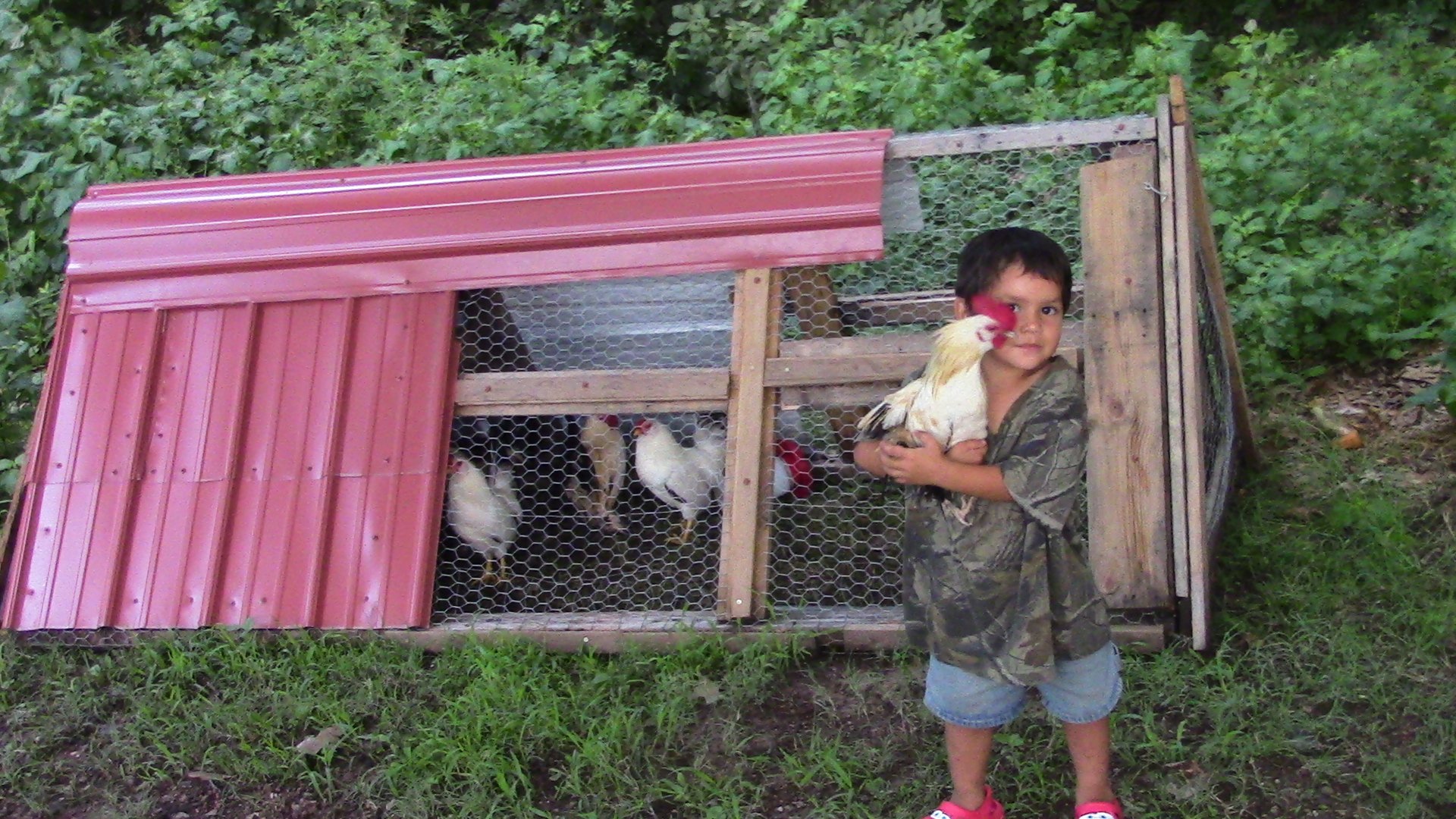
OUR SON WITH “MONSTER TRUCK THE EAGLE”
I used a wire fencing with larger holes in it for the bottom, to make sure plenty of grass and greens would be sticking into the tractor. The sides are all covered with chicken wire, and I used plenty of metal roofing material to provide shade. I figured with the heat down here, staying out of the sun would be more important, though just under half of the tractor isn’t covered, proving sun and a breeze sometimes.

DOORS EXIST AT EACH END OF THE TRACTOR
There wasn't much grass here to start with, but now it's time to move again. I used a simple triangle shape, and made doors that open at both ends. This one is a little heavy, but it can drag well or two people can move it. I’m currently in the process of adding wheels from a local bicycle scrap pile.
THE CHICKEN TRACTOR
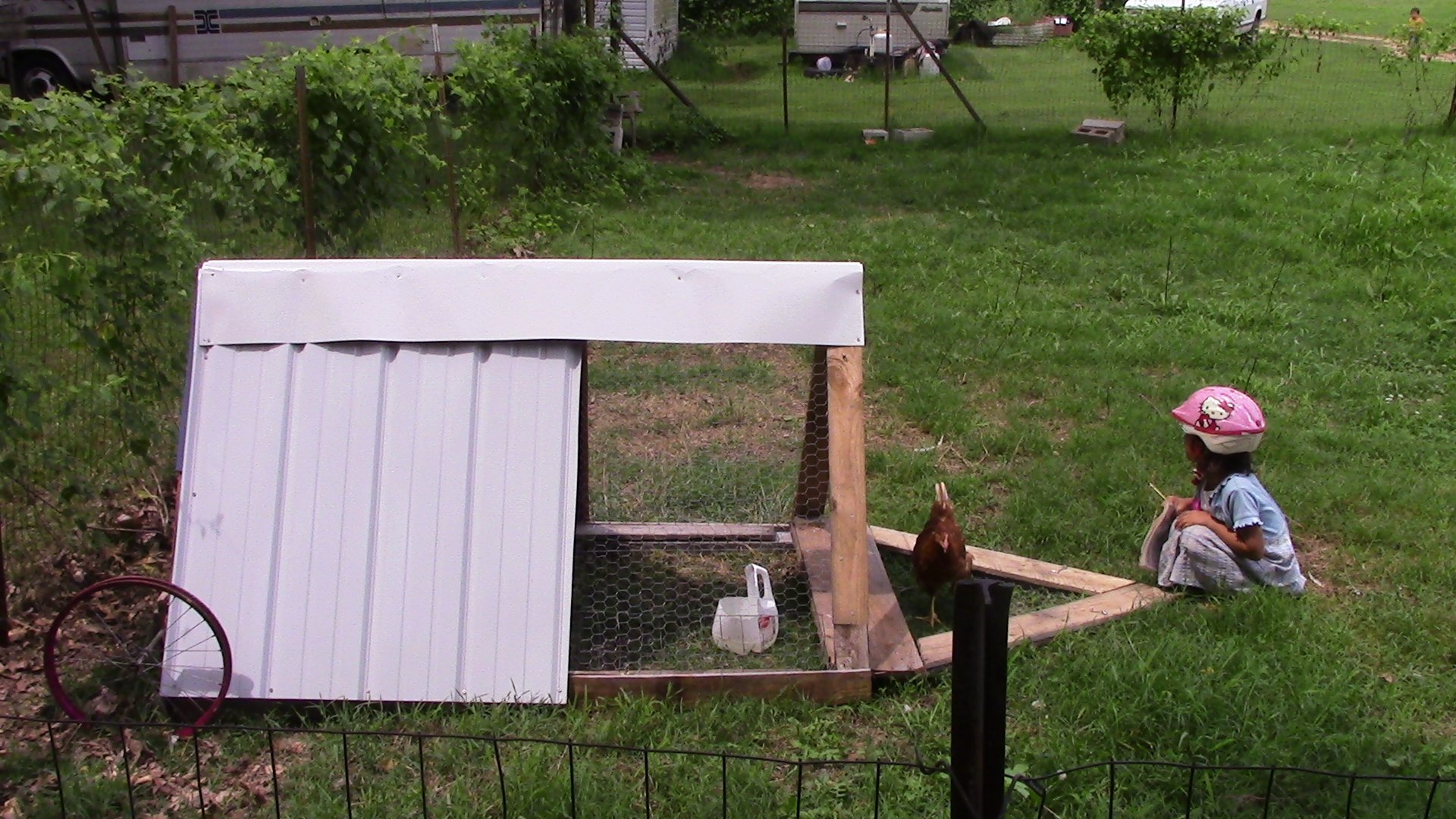
THIS IS OUR SECOND OLDEST DAUGHTER WITH THE CHICKEN TRACTOR
These chickens are some fun pets and great pest control, plus, they are already pretty well trained. I built this tractor for a friend originally, but he still hasn’t got his rabbits and we wound up using it, so I’ll have to build him another one. It’s definitely smaller than the first one, but it has an added bonus.
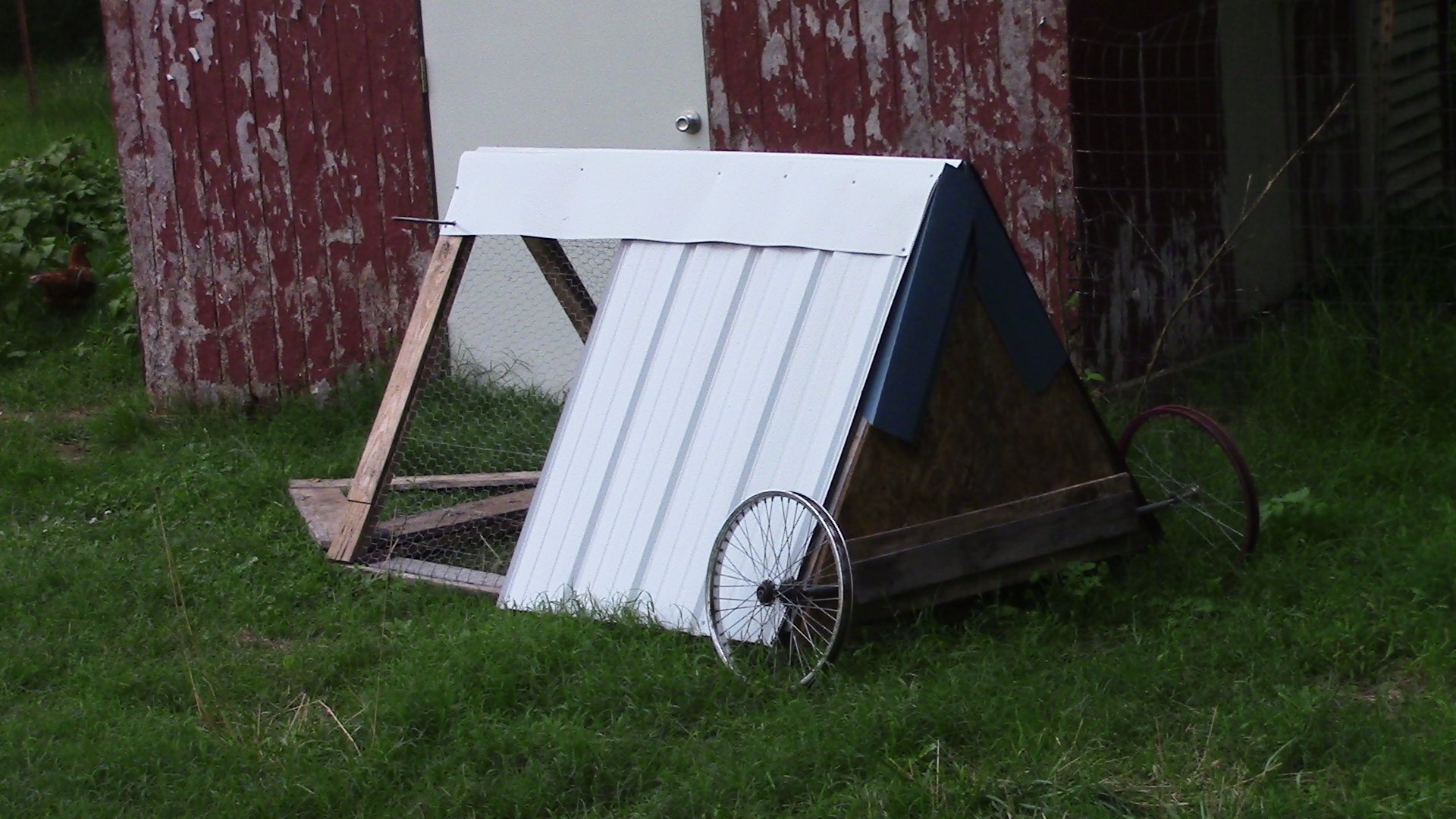
THE FIRST TRACTOR TO ACTUALLY GET WHEELS ON IT
Yes, wheels! I simply lift the front and pull it where I want it to go, which makes moving this one a lot easier. Since the chickens free range better than the roosters, they are pretty much out all day, and don’t need as big of a tractor. They’ll head in it to get out of the sun if they didn’t find another place, and roost in it for the night, but otherwise, they are on the prowl. They’ll gobble up all sorts of bugs and a variety of wild leafy greens too. Plus, I flipped the metal roofing backwards on this one, so now it white instead of dark green. This will help it not to soak up as much heat from the sun.
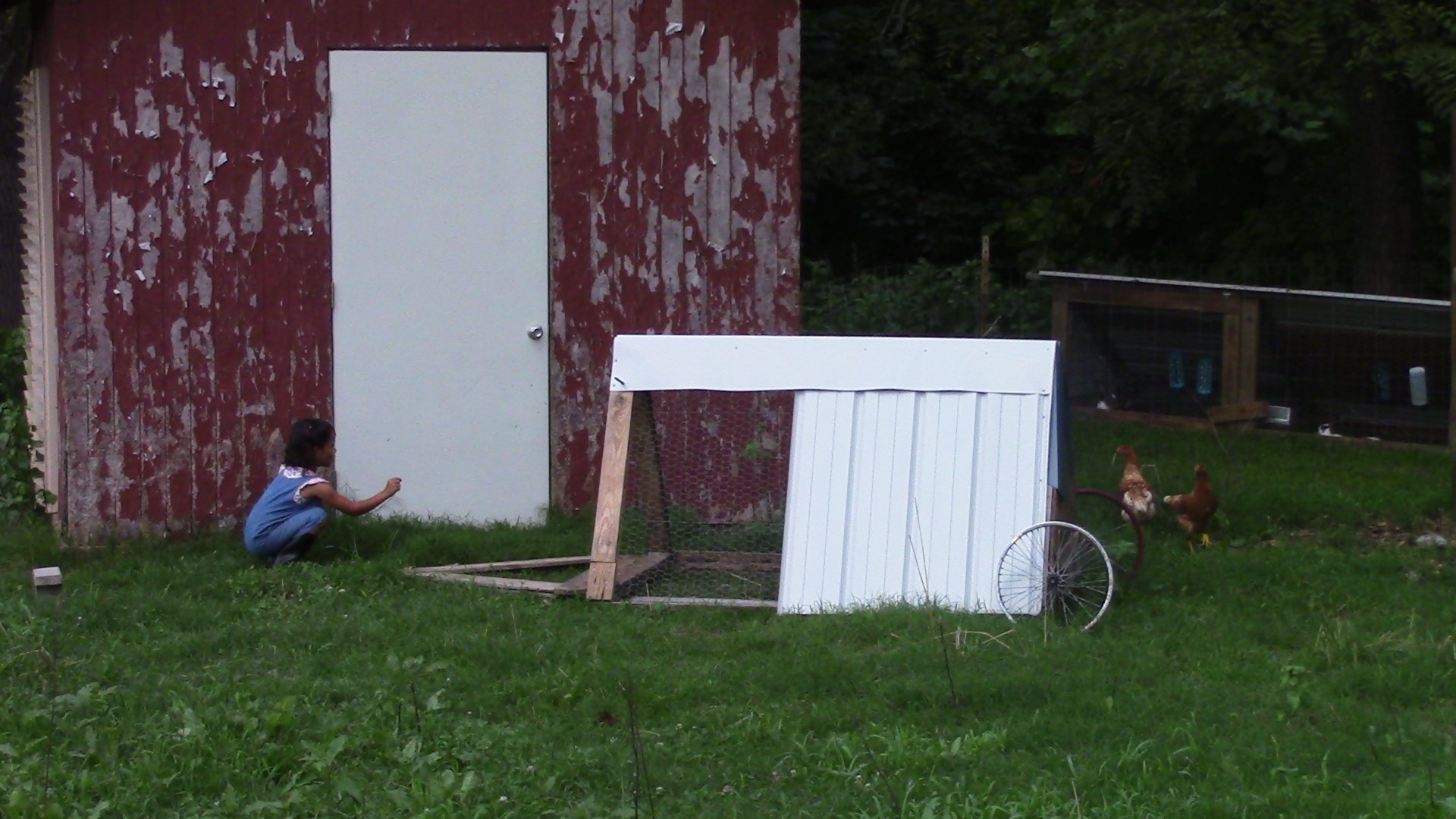
OUR DAUGHTER TRAINING THE CHICKENS
Eventually we would like to have a lot more free ranging animals, but we’ll work up to it. For now though, not only does the mobility of the tractors keep a fresh source of greens for the animals, it prevents any one area from being over-grazed, and also lets the animals slowly fertilize the whole yard with manure and urine, rather than just causing a pathogen pile in one corner of it.
THE RABBIT TRACTOR
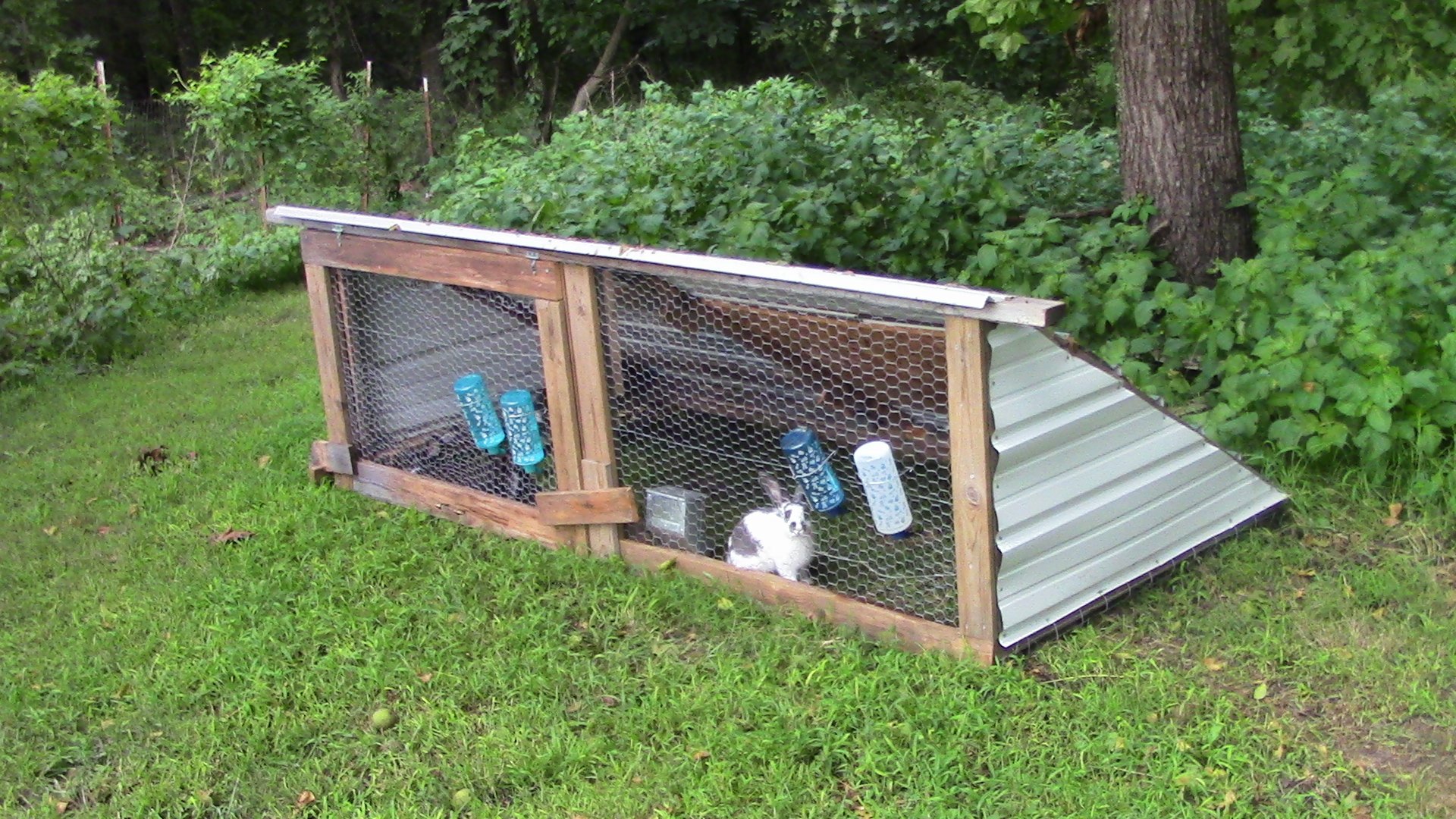
DIFFERENT STYLE, SAME CONCEPT
This is the third tractor that I’ve built. It’s mostly scrap parts again, just check out the roof.
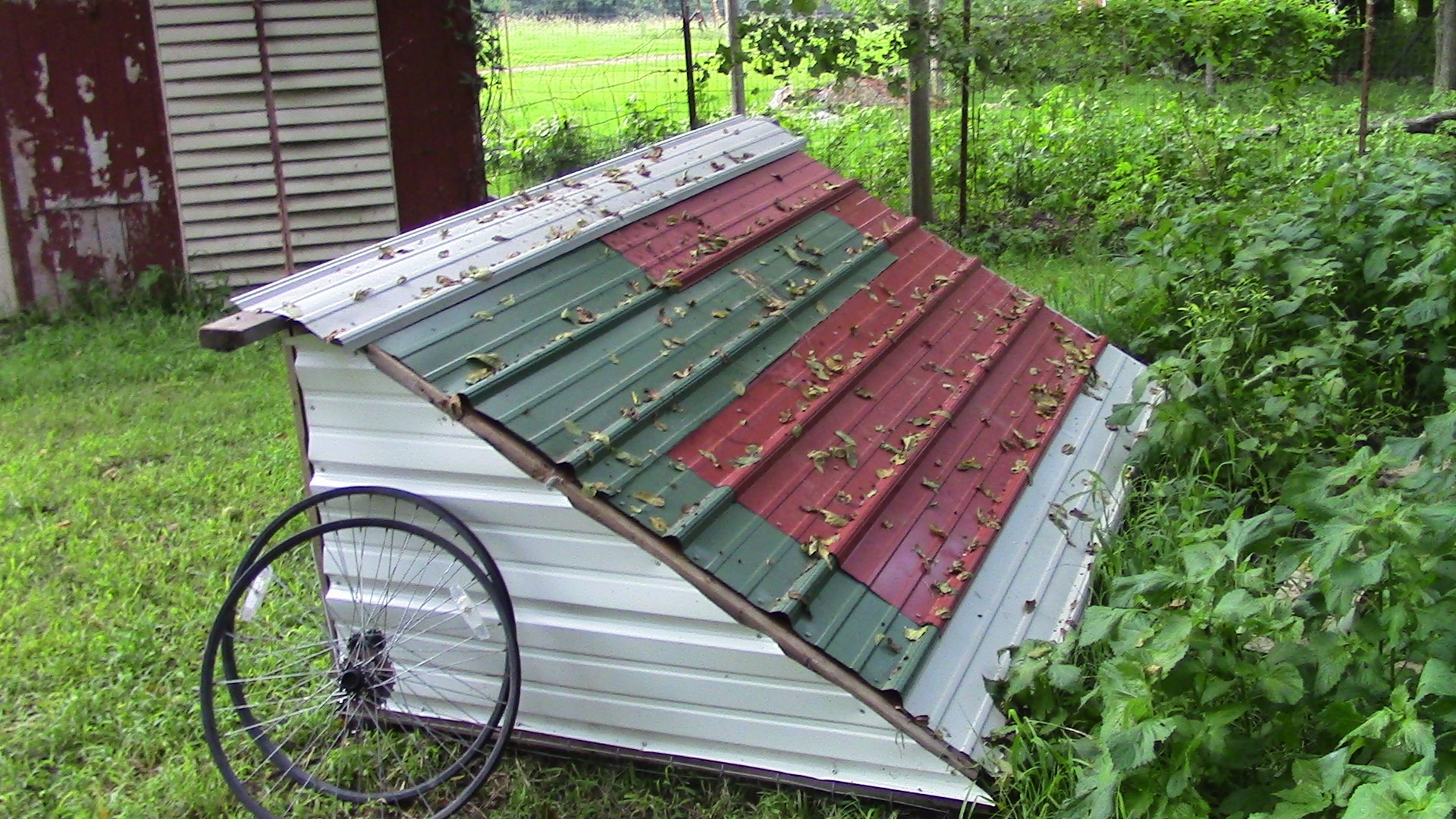
RECYCLED FREE MISMATCHED METAL ROOF
It still has a general triangle shape, like the other two, but I went for a 90 degree angle for the front. This way it has a flat open face to it, and the whole roof is covered. Also, it opens from the face, rather than the end this time.
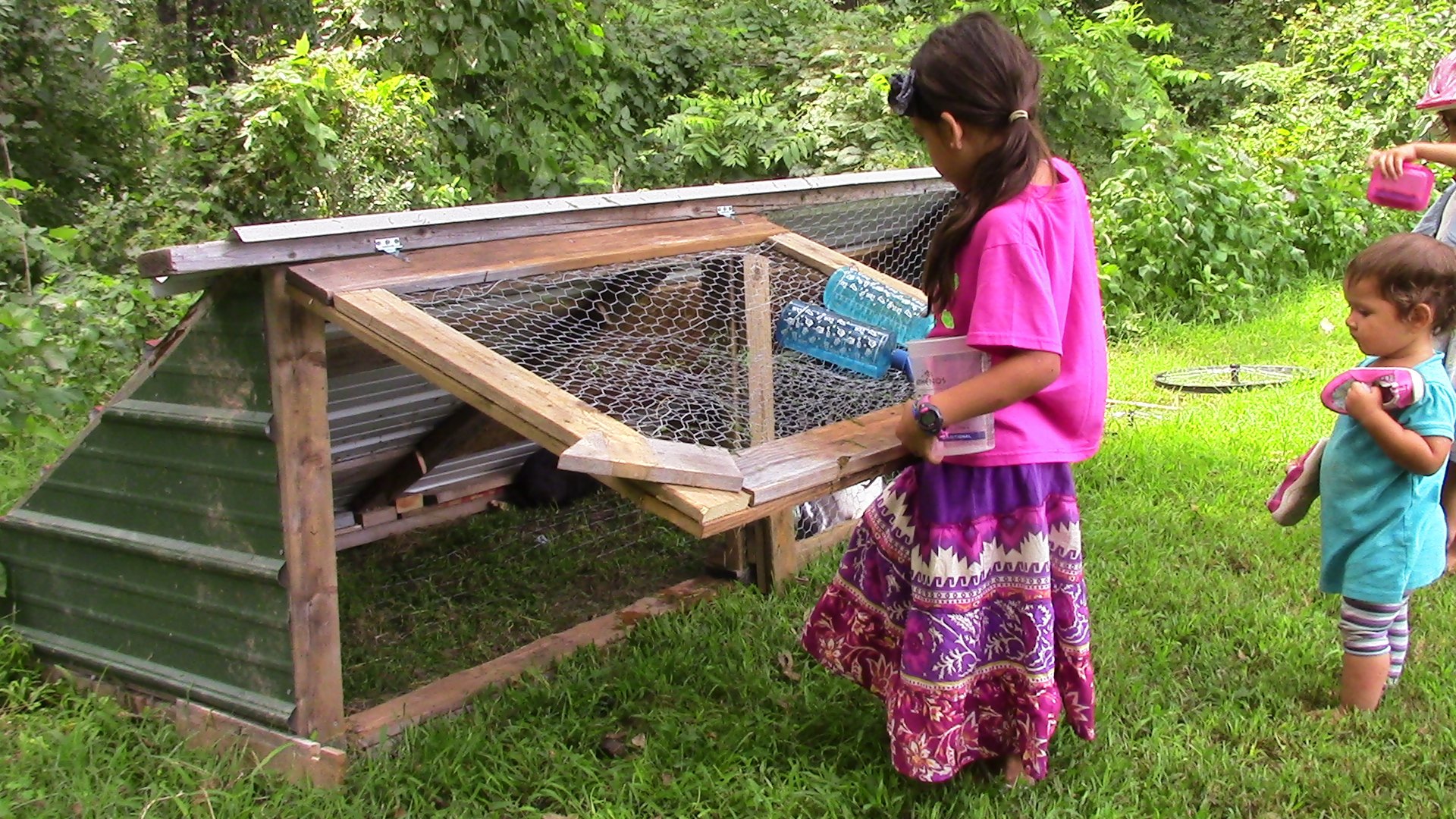
THE DOOR FOR THIS TRACTOR IS ON THE SIDE, NOT THE END.
I built a bigger door for easier access, and thankfully I got a whole pile of used screws and handles from the recycling center that we get our free mulch and compost from. What a blessing! Hardware can be expensive. This one two is still a functional work in progress.
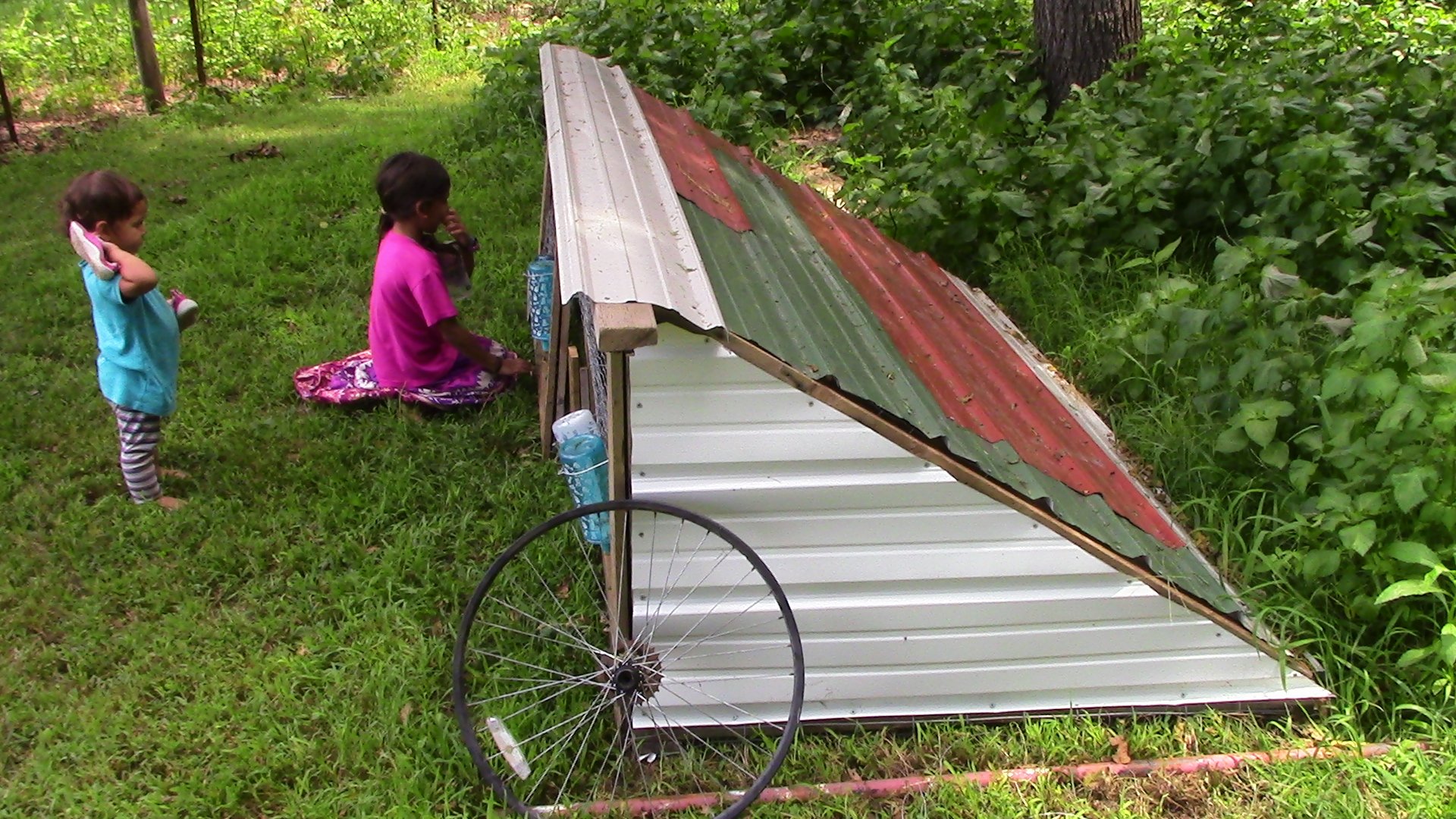
THE WHEELS ARE STILL MISSING
I’ll have to get some wheels on here shortly, but for now I can move it myself when I need to (basically every day.)
THE RABBIT CAGE
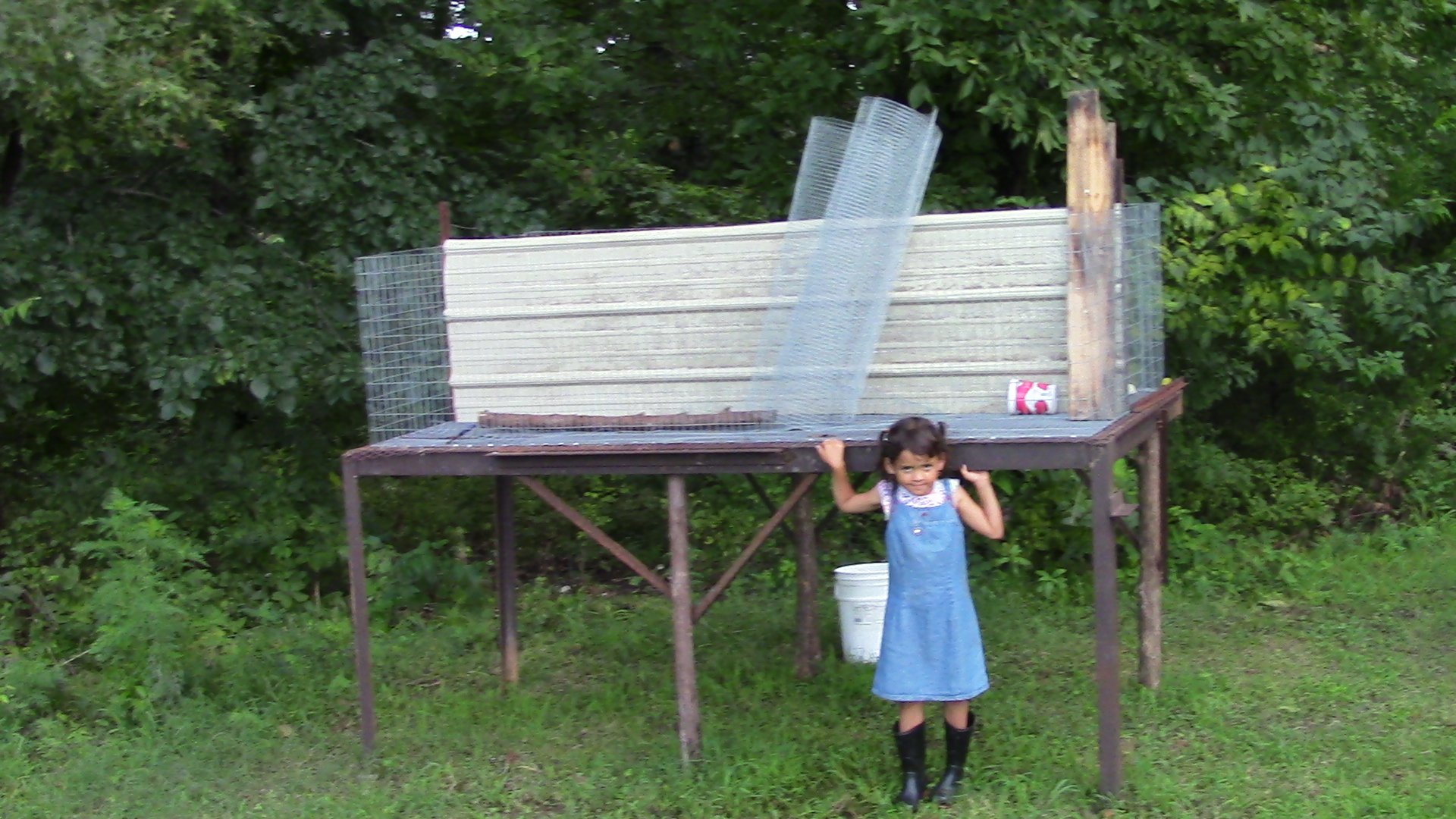
A WORK IN PROGRESS, A SIX RABBIT CAGE
I am also still going to be using more traditional cages at times. Breeding and birthing will not be done in a group setting, and the male and female rabbits will have to be separated and take turns on time in the tractor, at least until I build some more. I found some pretty heavy duty old metal tables with a thick wire top that were not being used. This one is my test cage, and if it works, I’ll build another.
The goal is to build six cages on top of the table, and place a roof for shade and rain protection over the top. Underneath I plan on mounting a large piece of metal at an angle that leads into a gutter, which will empty into a 5 gallon bucket. This way, all the manure and urine will end up in the same place (the bucket), and not only will chores be simplified, the manure will be easier to use.
I’ll keep you posted on how this works out. I’ll also probably do a post on the benefits of grass fed animals as well, because it is so good for them and us!

